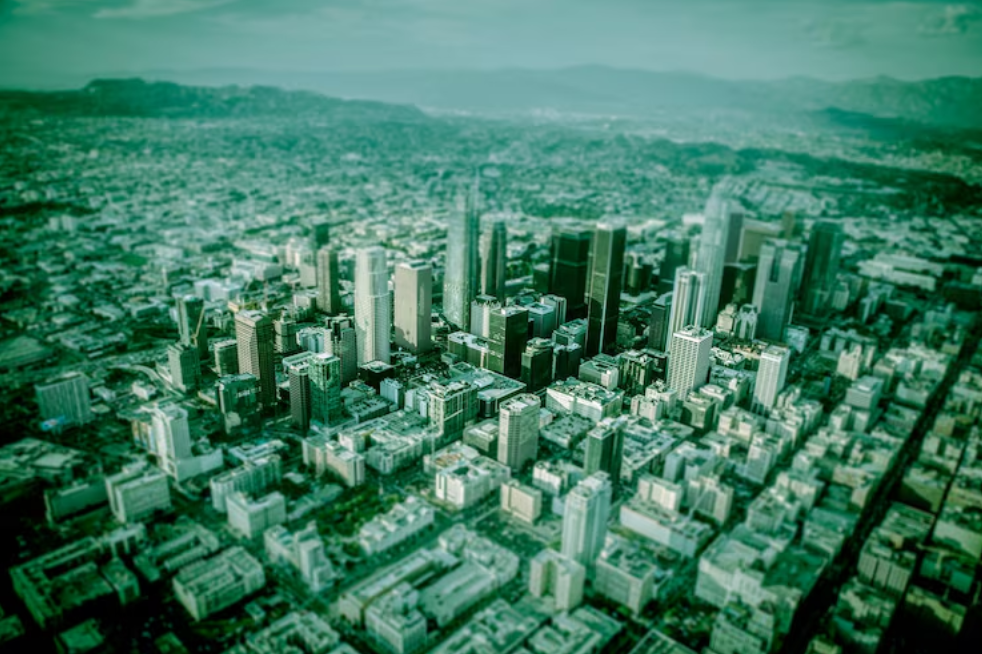Why Current Urban Growth is Unsustainable
Transportation is the foundation to all urban growth

Cars are not sustainable
Irrelative to any political discussion, cars are Western Society’s primary source of transportation. Cars are designed to last 100,000 to 200,000 miles in a time span from 7 to 15 years.
Cars need roads to operate on for them to function as transportation. The expected life of a concrete freeways is 15 years; with moderate weather and normal traffic. Asphalt roads are expected to last less than 10 years in moderate weather without a heavy traffic load. Rain breaks-down its surface, weight breaks-down it’s subsurface structure. The cost of road repair often requires the rebuilding of its sub-structure. The cost of building a two-lane road is estimated at $3 million to $11 million per mile.
America’s potholes of depleted roadways
There are 4.09 million miles of roadway in the U.S. (8.61 million lane-miles when accounting for highway travel). With a calculator to multiply the number of roadway miles times the low cost at $3 million per mile, the figure totals over $12 trillion dollars, as the minimum figure to rebuild America’s roadway infrastructure. The US budget for roads in the 2021 budget was $348 billion. Over a fifteen-year period (life expectancy of both cars and roads) that budget amount equals $5.22 trillion. That amount is $7 trillion short of the cost to rebuild America’s road infrastructure. Potholes are the result of corroded roadbed substructure, an indicator that road is worn out and needs to be rebuilt.
As a special note from anyone who would make the claim that States pay for their own roads, here is California’s transportation budget which shows that 93% of their transportation $26.9 billion annual budget comes from federal and special funds (special funds being extra taxes related to transportation).
There is, however, more to unsustainable urban growth than the government’s lack of funding to maintain roads.
The first official use of the term “sustainable development” came from a report in the 1980 World Conservation Strategy of the International Union for Conservation of Nature.
In 1983, the United Nations (UN) convened the World Commission on Environment and Development (WCED), which came to be known as The Brundtland Report. One of the conclusions identified three aspects of urban growth:
- Environmental
- Economic
- Social
In 1987, the UN debated the report which eventually led to the creation of the UN Commission on Sustainable Development in 1992. It grew into what is referred to as Agenda 21.
As the definition of sustainable development, Wikipedia states: “The Brundtland Report was intended to respond to the conflict between globalized economic growth and accelerating ecological degradation by redefining "economic development" in terms of "sustainable development". It is credited with crafting the most prevalent definition of sustainability:
"Sustainable development is development that meets the needs of the present without compromising the ability of future generations to meet their own needs."
From the book: ‘Rising from Unsustainable’:
To more clearly define and summarize unsustainable land-use design, there are three fundamental components in explaining land-use sustainability, each with its own impact:
Environmental Impact
The automobile requires road surfaces. These roadbeds are oil based. Ever watched a road being built? Lots of grading work, scraping dirt, filling, and generally reworking the natural surface of Earth. Okay, not a big deal in small amounts, but tens of millions of miles of roads heavily effect the natural water flow of streams and runoff. Secondly, millions of miles of roadbeds capturing grease, emissions by-products, pollutants, carcinogens, and oil spills are funneled as oil canals called roadbeds flowing directly into the water basins. That is undoubtedly environmentally unsustainable. Millions of electric and autonomous cars won’t resolve the damage caused by the oil-based road infrastructure.
Economic Impact
Ever hear the phrase “buy local, spend local?” This term is what creates regional economic sustainability. A dollar spent locally allows that dollar to stay in circulation, being continually exchanged within a local area. When that money is spent out of the local area, the money is gone; it can no longer be used locally. Automobile-centric land-use design is economically unsustainable. Here’s why: the first product of economic unsustainability is the purchase of a new automobile. Today’s purchase price of an automobile is what, on average? $50,000? That amount is instantly removed from circulation in a local economy, never to be recovered for circulation in that community unless that car was manufactured in that local community. Then there are the fuel consumption rates. Averages vary from region to region. For example, a county consumes 500,000 gallons of gasoline per day. At $3 per gallon, that is $1.5 million per day (less 2 percent for the wholesaler and retailer) permanently extracted from ever being used and circulated in that community. An even greater financial extraction from the community are insurance costs per vehicle, at an average cost of $120 per month per vehicle. This is economic unsustainability from the design of automobile-centric urban land-use.
Social Impact
These aspects are rarely considered by studies, except by a very few stragglers engaged in nontraditional academia. It’s the cutting edge of far-reaching consideration. There was a term coined in the early 2000s called visual hostility. It was popularized then, not so popular now, due to the extent of its content. Visual hostility is found to describe blight. Scores of nonprofit organizations declared war on urban blight. The support money behind nonprofits came from big money interests that cashed in on government subsidized, low cost, low-income neighborhood gentrification near high value real estate areas. A lot of blight was erased within a few years. To elected politicians, like homelessness, urban blight no longer exists.
Unsustainable urban growth will continue as long as the automobile remains the primary source of transportation in Western Society.



